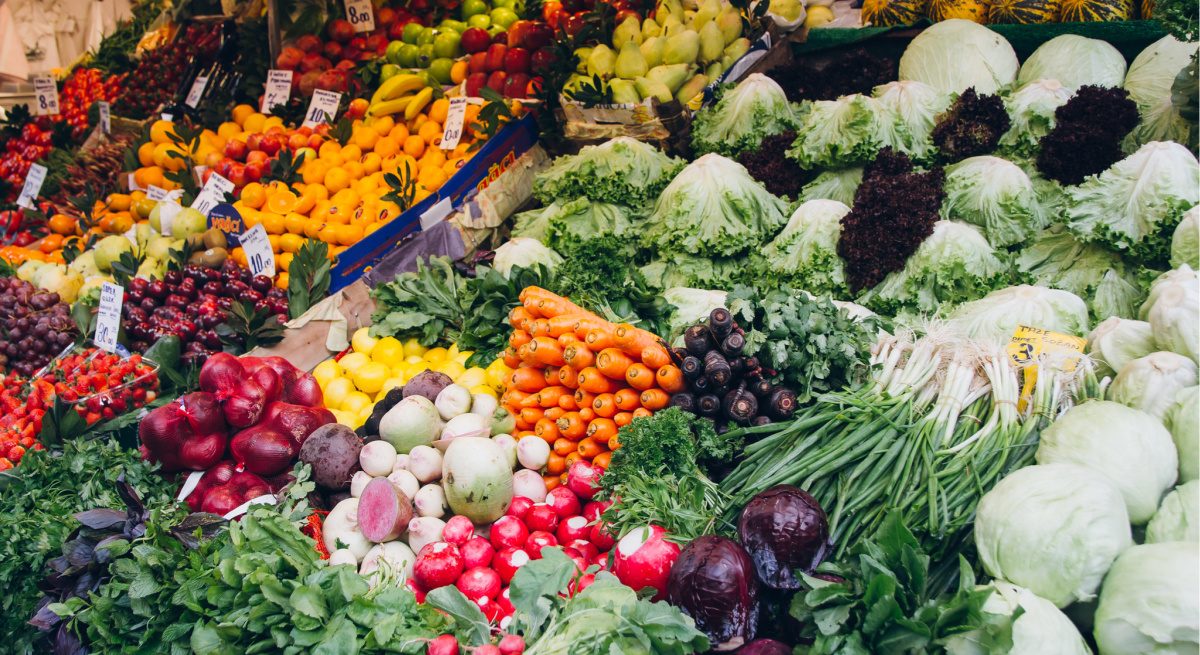How Does the Seasonal Transition Affect Produce Price and Availability?
3 Min Read By Andy Rosenbloom
This edition of MRM's "Ask the Expert” features advice from Buyers Edge Platform. Please send questions to Modern Restaurant Management (MRM) magazine Executive Editor Barbara Castiglia at bcastiglia@modernrestaurantmanagement.com.
Have you ever wondered how, despite changing climates and seasons, the same leafy greens you use in your menu items are available year-round?
In 2019, the U.S. harvested close to 260,000 acres of lettuce, be it iceberg, leaf, or romaine. Production lines then turned these greens into fresh cut salads, which captured the market share with a near 80 percent take.
Two states in the nation are keeping up with this high demand: California and Arizona.
These two states account for over 98 percent of the lettuce produced in the U.S, and most of this production occurs in just two cities: Yuma and Salinas. Salinas, Calif., also known as the "Salad Bowl of the World," produces lettuce from mid-March through October. Meanwhile, the desert town of Yuma, Ariz., then takes the ball for the rest of the year.
This period, when growing regions change, is known as the Transition.
The Transition involves incredible planning that goes along with tremendous costs. Whole operations, including field crews, trucks, equipment, and the technology required for pre-packaged salads, make this three-day trek twice a year. As Clint Cowden, an industry veteran, described to Zócalo Public Square, the transition requires tearing down an $80 million operation, moving it to Yuma or Salinas, and putting it back together. Sounds painful, to say the least.
Why This Bi-Annual Migration?
Why do operations go to all this trouble? In one word, weather. Lettuce is particularly vulnerable to temperature changes. Optimum growing occurs at around 73°F during the day and 45°F in the evening. Any dramatic variation can lead to bitter, loose, fluffy heads.
Salinas, just eight miles from the Pacific Ocean, offers cool and moderate temperatures. The winter, however, can bring on dense fog, which lettuce is opposed to. The sunny high desert climate of Yuma, supplied with water from the Colorado river, makes it the perfect lettuce-growing partner.
As we know, weather is not always predictable. Any weather-related issues can have a dramatic effect on supply and prices as lettuce transitions from one area to the next.
How Produce Markets are Impacted by the Transition
Transitions occur in almost all produce categories, as growing seasons are dictated by weather. Growers vertically integrate in various growing regions to supply produce year around. Transition creates challenges as fields in one growing region end, and fields in the new growing region begin production.
“Growers often need to harvest in both regions for a few weeks during the transition, and transfer product to the main shipping point, causing more days in transit and shorter shelf life when received by the consumer leading to lower quality. The timing in when fields are ready in the new growing region can vary by weeks based on weather, as warm weather can speed up the process, and cooler weather can slow down growth,” says Christopher Rheault, vice president of operations at Fresh Concepts. “Growers may need to harvest sooner than desired, which leads to lower yields and quality, lower overall supply and higher pricing. If warm weather matures the product faster, growers may have to transition sooner, and transfer products from both growing regions for a longer time period, creating higher cost.”
2020 Has Been a Challenging Year
2020 has created a whole new set of challenges. As with almost all industries around the world, the pandemic has left its mark on U.S. agriculture. To harvest, trim, and pack lettuce takes about 45,000 farm workers. It is a labor-intensive process involving long hours.
Back in April, the USCIS published a temporary final rule to amend certain H-2A requirements to avoid disruption in the nation's supply chain. This occurred at the same time growers were figuring out how to maintain distance between workers in the field, with some placing plastic partitions between workers as they harvested. These changes caused fewer harvesters in the field and less people in the plant.
At the same time, restaurants and schools were no longer ordering. Growers are planting less product to account for lower overall demand as well as increased heat preventing growers from harvesting when temperatures reached over 90 degrees. If demand picks up unexpectedly, this could lead to supply shortages, higher pricing and pro-rates throughout the industry. Another big challenge we are seeing on the growers/shipper's side is labor.
A Managed Produce Partner Can Help
To offset some of these transitional challenges, working with a Managed Produce Program can protect restaurant operations from major changes in pricing and supply.
By vertically integrating with several growers in each major produce category, a Managed Produce Program can help mitigate price swings, supply and quality issues through offering multiple options for distributors and restaurants.
This is especially true during times of transitions or other weather-related disruptions. You also can review the fruit and produce seasonality chart to help plan for seasonal changes, both in the supply and on your menu.


